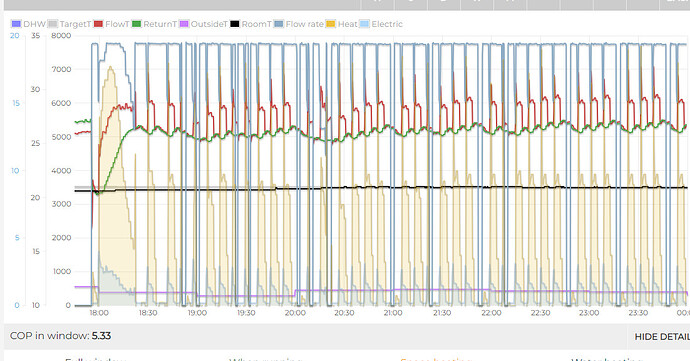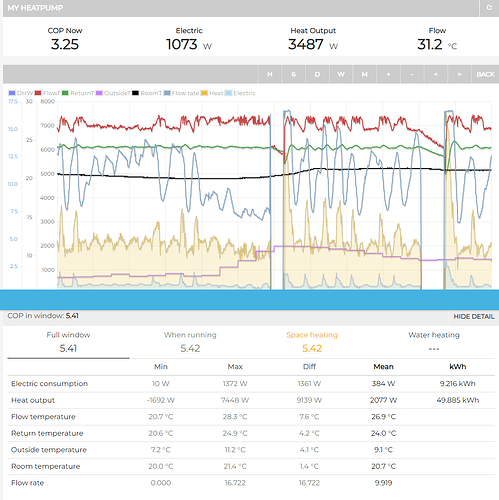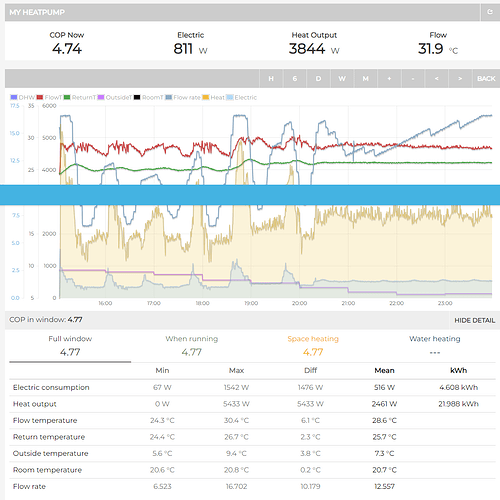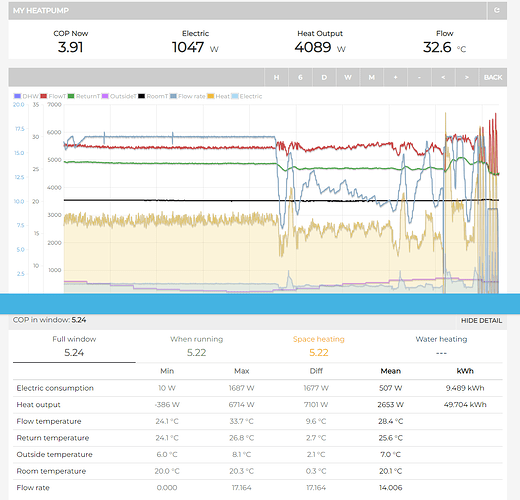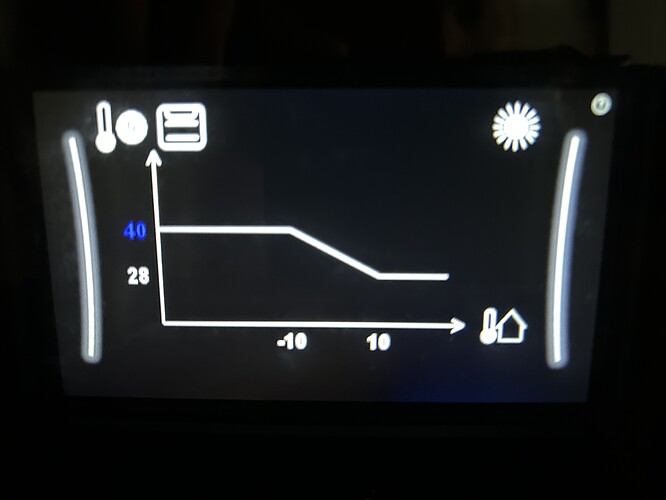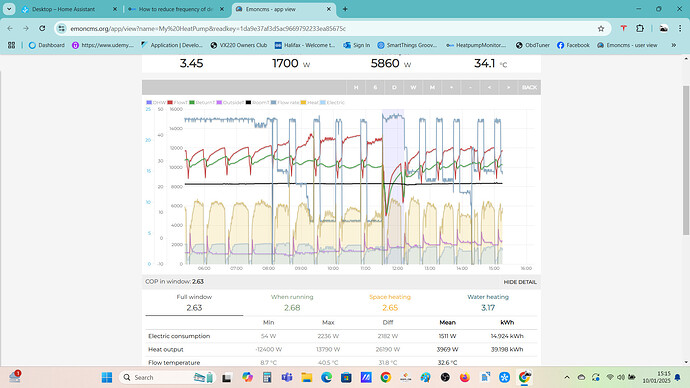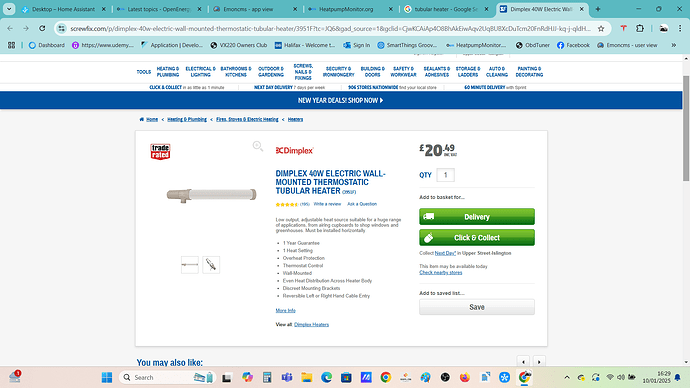I don’t think the Daikin controls are particularly sophisticated.
Other manufacturers use degree minutes and a fixed flow rate.
Daikin control RWT.
If I understand @johncantor correctly, this is a hang over from the days when heat pumps didn’t have inverter control for the compressor.
At the start of a heating cycle, flow rate goes to maximum for about 20 minutes. This is to get the water in the system up to the requested flow temperature.
It seems to ignore the RWT at this point.
If the RWT rises too much, it will use any overshoot to keep a reasonable dT. If the overshoot set isnt enough and RWT is too high, the heat pump stops and then has another go in a few minutes.
But it starts again completely from scratch, so another full 20 minutes at full flow rate, which will fail again for obvious reasons.
After about 30 minutes the flow rate drops to minimum as it tries to lower the RWT that is now higher than what it is aiming for.
So you get a great big slug of heat followed by not very much heat (relatively) as the flow rate is reducing and the dT is small.
Then, over a period of time, the RWT reduces to where it needs to be.
After that, the heat pump tries to keep the RWT in line by varying the flow rate. My experience is that it can’t do this very well as the flow rate swings massively from high to low with big peaks and troughs in the heat output.
All of this is bad enough at a fixed lwy but once you introduce a wdc and modulation into the mix, then everything is constantly moving and it is never stable.
My RWT is nearly always too high compared to the set dT so the flow rate is always at the minimum after the initial 30 minutes of a heating cycle. I don’t think the heat pump is bothered about this, there is nothing else it can do. I suppose it could decide to raise the flow temperature, but it doesn’t, it is fixed, more or less, at what I set it at. As long as the RWT isn’t close to the LWT it doesn’t care.
I would assume the power required is just that based on how much water is flowing, the dT, the flow temperature requested and the outside temperature.
This is a Daikin trying to run at too low a flow temperature relative to the heat loss of the house and emitter capacity. It’s just too aggressive with the flow rate, too much heat.
This is mine with a lower dT, the flow rate variations are mad in my opinion with lots of spikes in heat output. It is also moving the flow temperature with the flow rate, not one thing is steady.
And another. the flow rate is at both extremes just to keep the set dT of 4c, it can’t do it.
And here, a dT of 3c is great when it was cold, max flow rate and stable, just like it is when I run it at the lowest flow rate. The theme here is that a constant flow rate is stable and efficient, a wild flow rate makes a mess.
I think perhaps the biggest issue is that I can see it.
Without monitoring I would be oblivious to it. Maybe that is the best way and possibly why Daikin don’t make this information available as standard?
